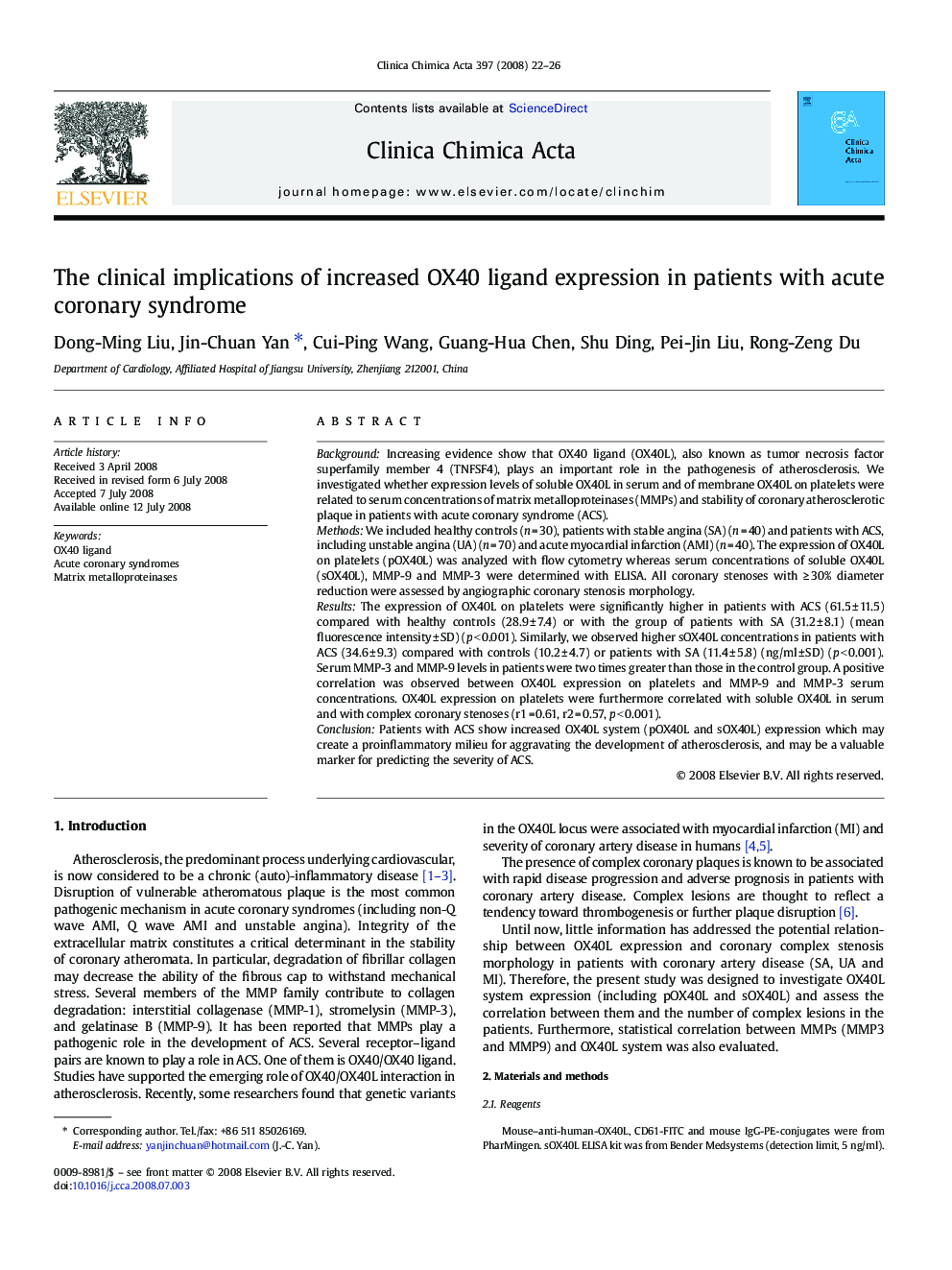| Article ID | Journal | Published Year | Pages | File Type |
|---|---|---|---|---|
| 1966867 | Clinica Chimica Acta | 2008 | 5 Pages |
BackgroundIncreasing evidence show that OX40 ligand (OX40L), also known as tumor necrosis factor superfamily member 4 (TNFSF4), plays an important role in the pathogenesis of atherosclerosis. We investigated whether expression levels of soluble OX40L in serum and of membrane OX40L on platelets were related to serum concentrations of matrix metalloproteinases (MMPs) and stability of coronary atherosclerotic plaque in patients with acute coronary syndrome (ACS).MethodsWe included healthy controls (n = 30), patients with stable angina (SA) (n = 40) and patients with ACS, including unstable angina (UA) (n = 70) and acute myocardial infarction (AMI) (n = 40). The expression of OX40L on platelets (pOX40L) was analyzed with flow cytometry whereas serum concentrations of soluble OX40L (sOX40L), MMP-9 and MMP-3 were determined with ELISA. All coronary stenoses with ≥ 30% diameter reduction were assessed by angiographic coronary stenosis morphology.ResultsThe expression of OX40L on platelets were significantly higher in patients with ACS (61.5 ± 11.5) compared with healthy controls (28.9 ± 7.4) or with the group of patients with SA (31.2 ± 8.1) (mean fluorescence intensity ± SD) (p < 0.001). Similarly, we observed higher sOX40L concentrations in patients with ACS (34.6 ± 9.3) compared with controls (10.2 ± 4.7) or patients with SA (11.4 ± 5.8) (ng/ml ± SD) (p < 0.001). Serum MMP-3 and MMP-9 levels in patients were two times greater than those in the control group. A positive correlation was observed between OX40L expression on platelets and MMP-9 and MMP-3 serum concentrations. OX40L expression on platelets were furthermore correlated with soluble OX40L in serum and with complex coronary stenoses (r1 = 0.61, r2 = 0.57, p < 0.001).ConclusionPatients with ACS show increased OX40L system (pOX40L and sOX40L) expression which may create a proinflammatory milieu for aggravating the development of atherosclerosis, and may be a valuable marker for predicting the severity of ACS.
